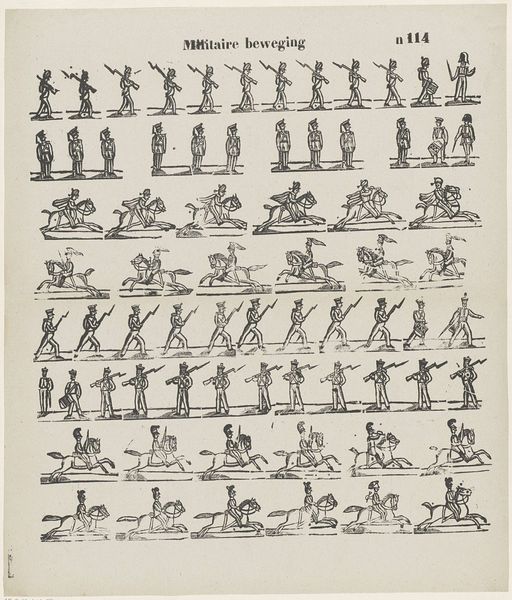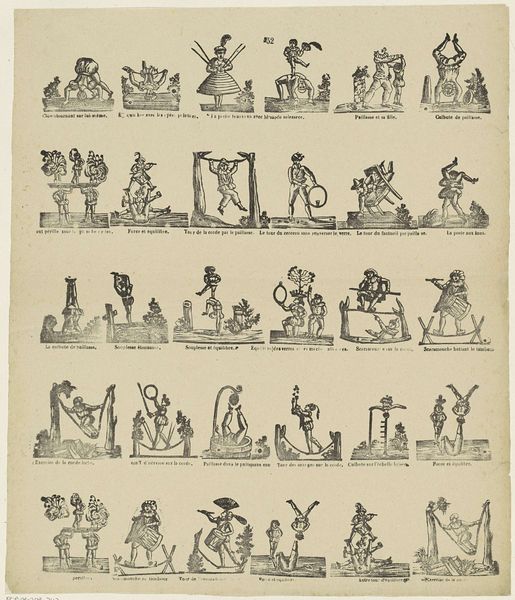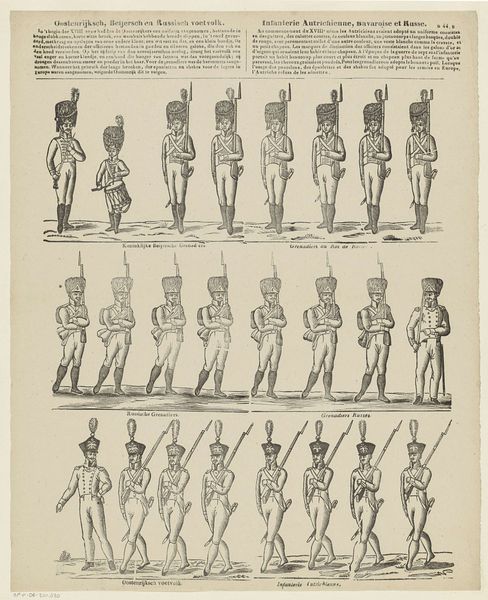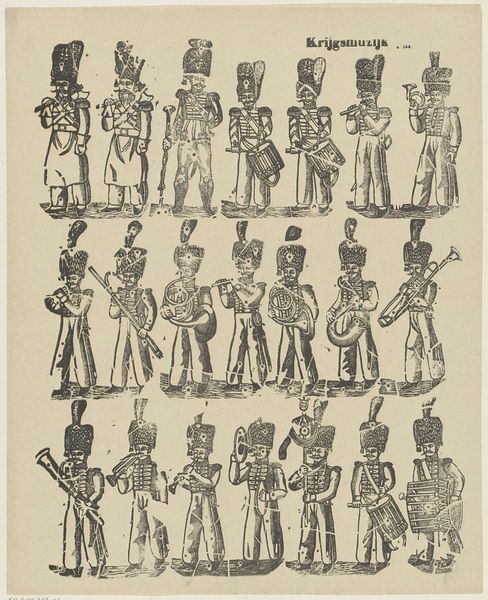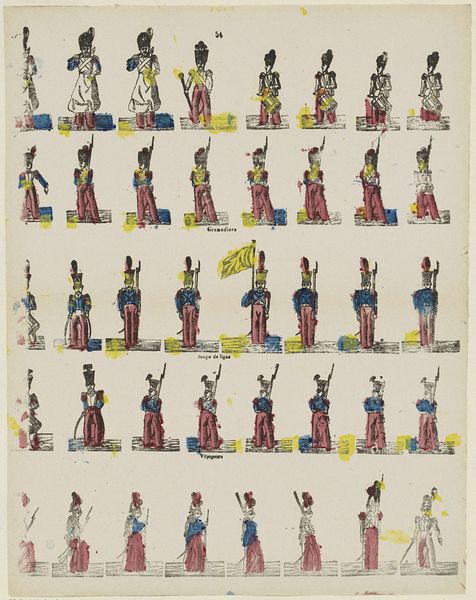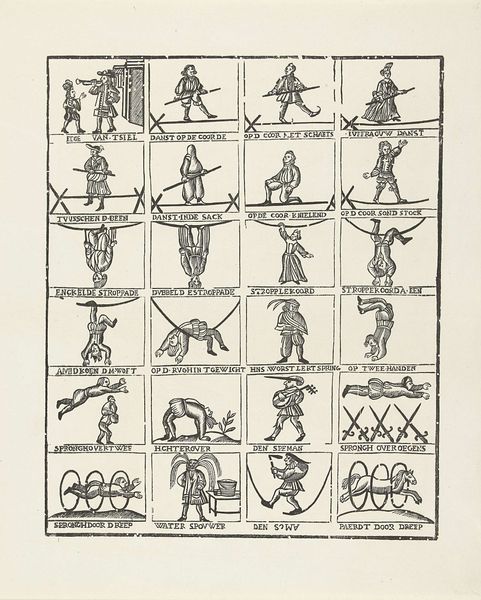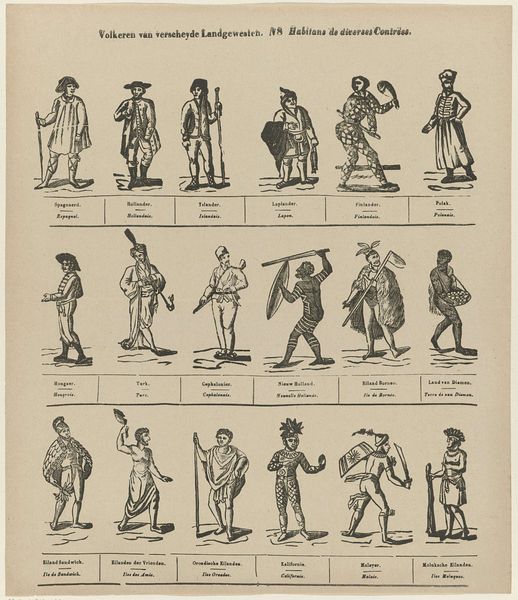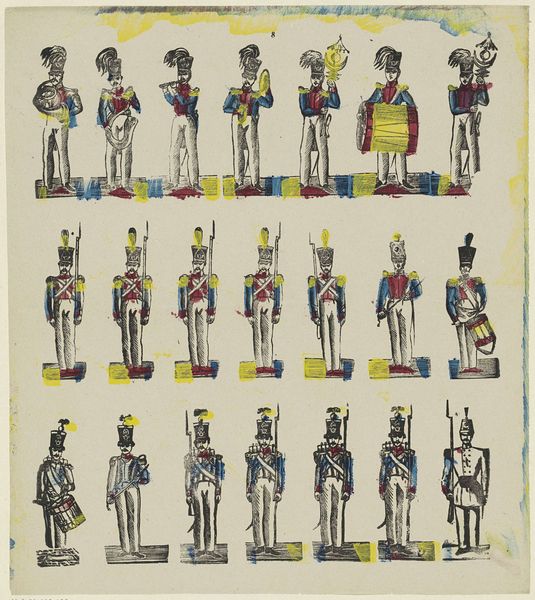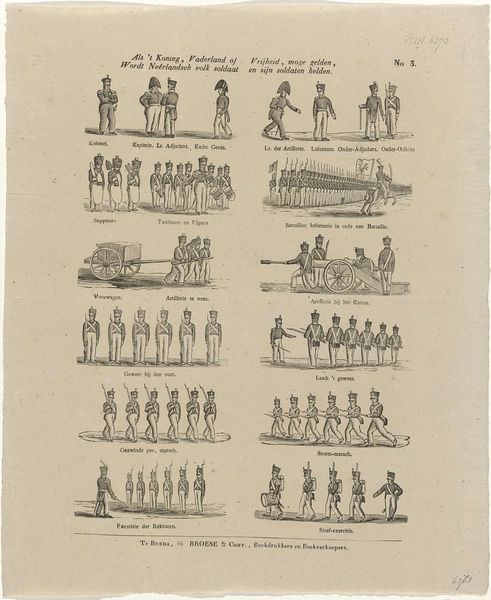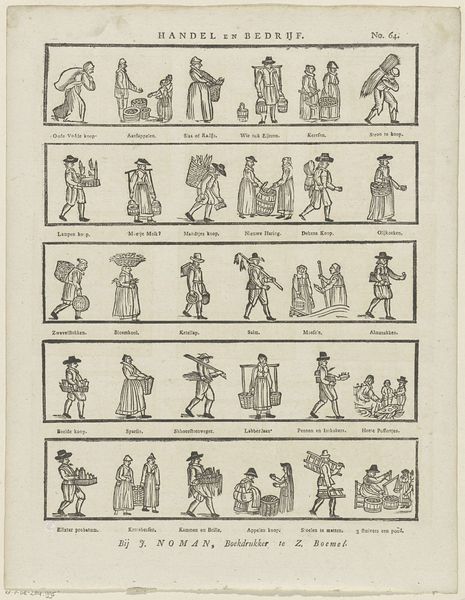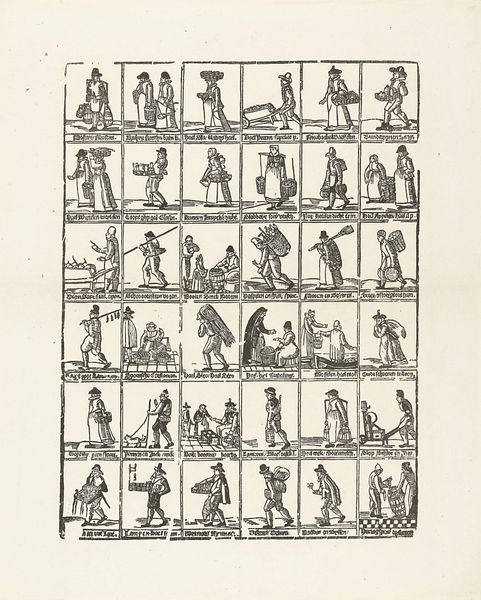
graphic-art, print, engraving
#
graphic-art
# print
#
engraving
Dimensions: height 389 mm, width 334 mm
Copyright: Rijks Museum: Open Domain
Curator: Look at this fascinating print from sometime between 1827 and 1894, entitled "Militairen," which translates to "Soldiers." Editor: It’s quite stark. Seeing all these uniformed figures lined up like that is honestly unsettling, like some sort of regimented nightmare. What medium are we looking at? Curator: The print, part of the Rijksmuseum collection, is an engraving. Each figure is delineated with a sharp, decisive line. This allows the artist to meticulously represent the soldiers' uniforms and weaponry. Editor: You’re right about the details. I’m drawn to the repetitive process here; think about the labor involved in engraving each individual figure. The social context behind the image, a portrayal of the military through repetitive engravings, creates a strange comparison. Curator: Precisely. During this period, depictions of military personnel served specific ideological purposes. This print functions, in a way, as a catalog of different ranks and positions, reflecting the prevailing militaristic structure of 19th-century European society. Editor: Absolutely. The print's stark presentation forces us to confront power dynamics and control and reflect on questions about duty, power, and the human cost inherent to military structures. It feels… removed. Curator: Indeed. It lacks any glorification; instead, it gives us an objective depiction. The way the soldiers are arranged in neat rows invites comparison between uniformity and individuality, raising complex questions of how personal identity relates to military culture. Editor: It leaves me wondering what it means to produce something like this mechanically—as it almost feels—rather than by freehand. What stories might the individual engravers have told, translating concepts into repeatable material objects? Curator: Excellent point. While seemingly impersonal, this print opens dialogues around gendered narratives within military contexts, challenging idealized representations of strength and stoicism, especially when viewed from a feminist lens. Editor: It does. Looking at this now, I can’t help but think about the raw materials. Paper production was, and remains, an industry that draws heavy power consumption. The social impact of creating it goes unsaid. Curator: A striking end note. Analyzing seemingly detached artworks offers so many ways to investigate military visual representation, urging conversations about labor, social power and intersectional stories through material culture. Editor: Indeed, it brings a whole new weight to the idea of “just following orders.”
Comments
No comments
Be the first to comment and join the conversation on the ultimate creative platform.
